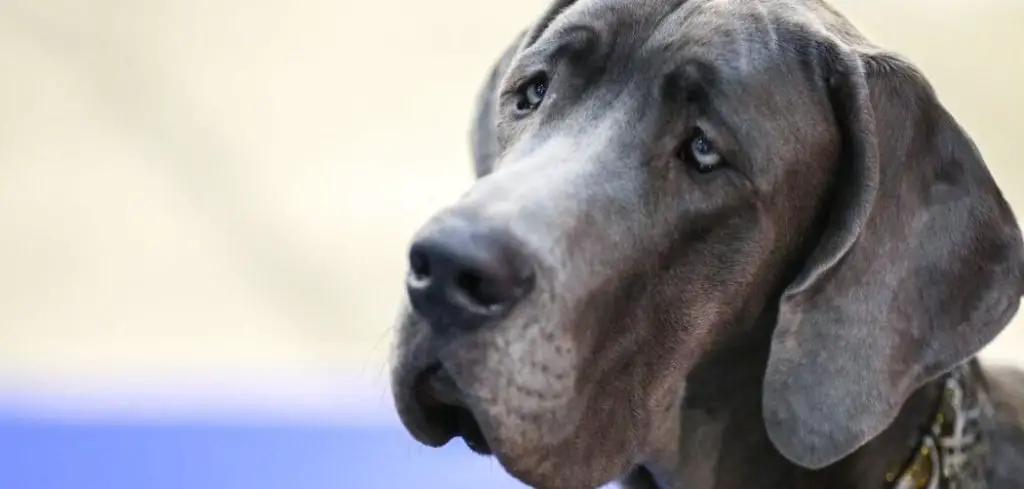When your senior dog’s eyes begin to look cloudy, it can be both worrying and confusing. Cloudy eyes in older dogs may be a harmless sign of aging or a symptom of a serious eye disease that requires urgent treatment.
We outline the common reasons for cloudy eyes in old dogs, what you can do at home, and when to seek veterinary help.
Old Dog Eyes Cloudy — Why It Happens
Cloudy eyes in older dogs often stem from natural age-related changes, but they can also signal disease. Conditions like cataracts and nuclear sclerosis commonly cause cloudiness, while more serious issues such as glaucoma, dry eye, or corneal ulcers can also be at play.
Diabetes and retinal degeneration may further complicate vision in aging pets. Because some causes are harmless and others threaten permanent vision loss, a proper diagnosis is essential.

Old Dog Eyes Cloudy: Common Causes
Cataracts
Cataracts are one of the most recognized causes of cloudy eyes in older dogs.
They occur when the lens inside the eye becomes opaque, producing a whitish or bluish haze. Owners often first notice this cloudiness when light catches their dog’s eyes in photos.
Cataracts can lead to progressive vision loss, with some dogs becoming completely blind if untreated. In diabetic dogs, cataracts may develop rapidly, making veterinary evaluation urgent.
Read more: Old Dog Eyes Issues (Explained)
Nuclear Sclerosis
Nuclear sclerosis is a natural aging change that gives the eyes a bluish-gray tint.
Unlike cataracts, this condition does not usually cause significant vision loss. Dogs with nuclear sclerosis may still see well but might struggle in dim light or with depth perception.
Owners often mistake this harmless condition for cataracts, making an eye exam the best way to distinguish between the two.
Glaucoma
Glaucoma develops when fluid in the eye doesn’t drain properly, creating high pressure inside the eye.
This painful condition can make a dog’s eyes look cloudy, red, or enlarged. Some dogs may squint or paw at their eye, while others lose vision suddenly.
Glaucoma is a veterinary emergency. Without quick treatment, permanent blindness and significant pain are likely outcomes.
Dry Eye (Keratoconjunctivitis Sicca)
Dry eye happens when the tear glands don’t produce enough lubrication.
Older dogs with this condition often show cloudy eyes accompanied by thick discharge, redness, or frequent blinking. The lack of tears can damage the cornea, causing further cloudiness and discomfort.
Treatment typically involves prescription eye drops that stimulate tear production or protect the eyes, restoring comfort and preventing complications.
Corneal Ulcers
Corneal ulcers are open sores on the surface of the eye, often caused by trauma, infection, or chronic dry eye.
They can make the cornea look hazy or cloudy, sometimes with visible spots on the eye. Dogs may squint, rub their face, or show sensitivity to light.
These ulcers are very painful and can lead to permanent damage if untreated, making veterinary care critical.
Diabetes-Related Changes
Senior dogs with diabetes are prone to cloudy eyes, primarily because of cataracts.
Excess sugar in the bloodstream disrupts the lens, causing rapid cloudiness that may severely impact vision.
In addition to eye changes, diabetic dogs may drink more water, urinate frequently, or lose weight. If cloudiness develops suddenly in a diabetic dog, a veterinary checkup is essential.
What to Do If Your Old Dog Has Eyes Cloudy
If your dog’s eyes look cloudy, start by keeping the area clean. Use a damp, soft cloth to gently wipe away any discharge, taking care not to touch the eye itself.
Keep your dog in a well-lit environment, especially if vision is declining. Adding nightlights or keeping furniture in predictable places can reduce stress and accidents.
Provide a balanced diet with nutrients that support eye health, including omega-3 fatty acids and antioxidants. This can promote long-term eye comfort and slow progression of some conditions.
Avoid using human eye drops, as these may irritate or harm your dog’s eyes. Only use medications prescribed by your veterinarian.
Most importantly, schedule a veterinary appointment as soon as cloudiness is noticed. Early diagnosis can make the difference between a manageable condition and permanent vision loss.
When to Call or Visit Your Vet
Cloudy eyes in older dogs should always be taken seriously, as some conditions progress quickly.
Seek veterinary care immediately if your dog’s eye cloudiness appears suddenly, is accompanied by redness, squinting, or thick discharge, or if the eye looks swollen or painful.
If your dog bumps into objects, hesitates in dark spaces, or seems visually disoriented, a vet exam can help determine whether cataracts, PRA, or another vision-threatening condition is responsible.
Emergency care is essential if your dog keeps pawing at the eye, shows sensitivity to light, or if cloudiness is paired with rapid vision loss. These may signal glaucoma, corneal ulcers, or other urgent conditions.
Read more: Old Dog Vestibular Disease (Here’s what could be happening)
Key Takeaway
Cloudy eyes in senior dogs are a common concern, but the reasons behind them range from harmless aging changes to serious medical problems.
Conditions like nuclear sclerosis may simply be part of growing older, while cataracts, glaucoma, and corneal ulcers require veterinary treatment to preserve vision and relieve pain.
If your old dog’s eyes are cloudy, don’t ignore it. Gentle at-home care, environmental support, and prompt veterinary evaluation can ensure your dog stays as comfortable and safe as possible.
With early attention and the right care plan, cloudy eyes don’t have to mean the end of your dog’s quality of life — they can be managed with compassion and timely support.
